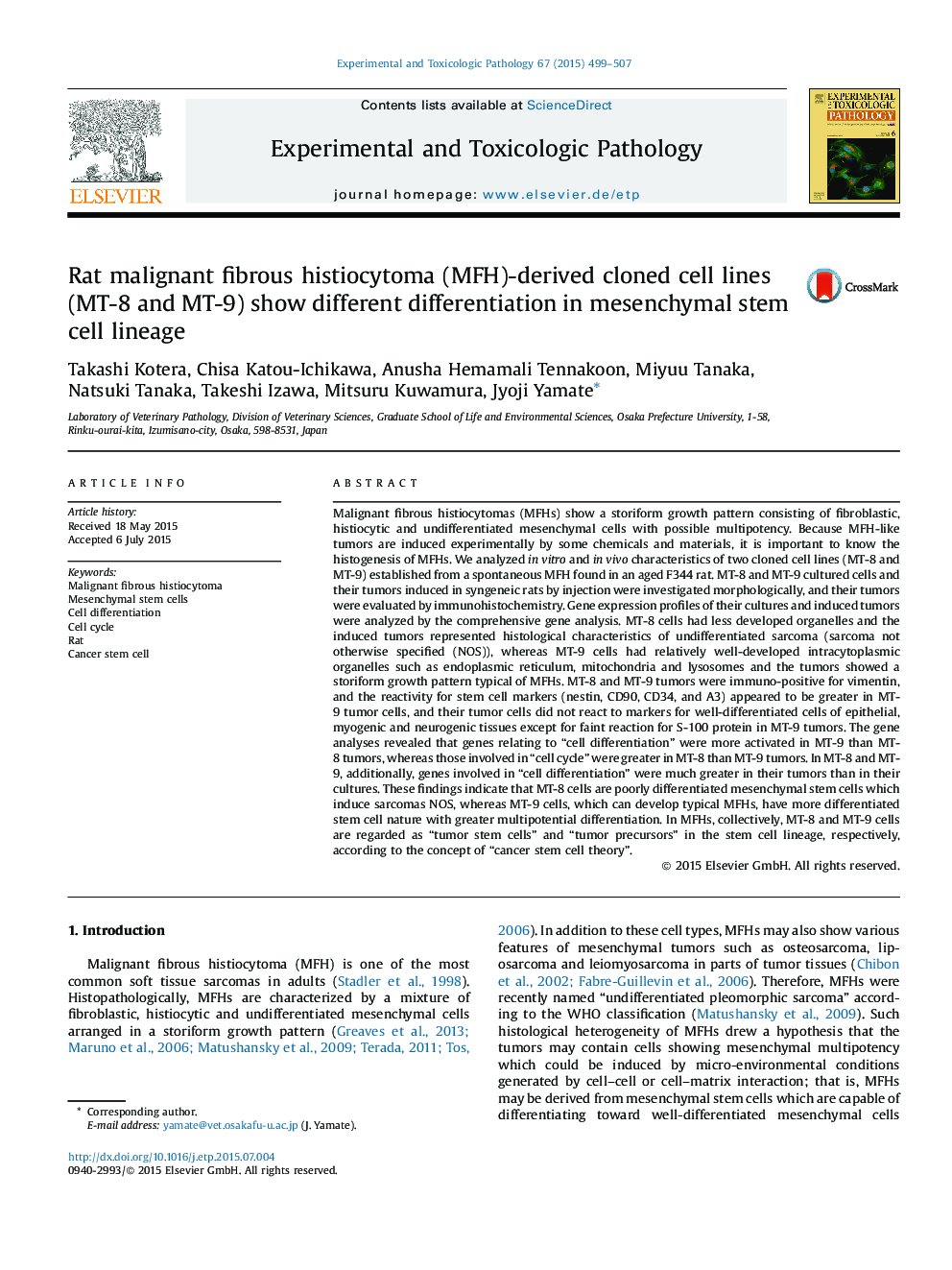| Article ID | Journal | Published Year | Pages | File Type |
|---|---|---|---|---|
| 2498818 | Experimental and Toxicologic Pathology | 2015 | 9 Pages |
Abstract
Malignant fibrous histiocytomas (MFHs) show a storiform growth pattern consisting of fibroblastic, histiocytic and undifferentiated mesenchymal cells with possible multipotency. Because MFH-like tumors are induced experimentally by some chemicals and materials, it is important to know the histogenesis of MFHs. We analyzed in vitro and in vivo characteristics of two cloned cell lines (MT-8 and MT-9) established from a spontaneous MFH found in an aged F344 rat. MT-8 and MT-9 cultured cells and their tumors induced in syngeneic rats by injection were investigated morphologically, and their tumors were evaluated by immunohistochemistry. Gene expression profiles of their cultures and induced tumors were analyzed by the comprehensive gene analysis. MT-8 cells had less developed organelles and the induced tumors represented histological characteristics of undifferentiated sarcoma (sarcoma not otherwise specified (NOS)), whereas MT-9 cells had relatively well-developed intracytoplasmic organelles such as endoplasmic reticulum, mitochondria and lysosomes and the tumors showed a storiform growth pattern typical of MFHs. MT-8 and MT-9 tumors were immuno-positive for vimentin, and the reactivity for stem cell markers (nestin, CD90, CD34, and A3) appeared to be greater in MT-9 tumor cells, and their tumor cells did not react to markers for well-differentiated cells of epithelial, myogenic and neurogenic tissues except for faint reaction for S-100 protein in MT-9 tumors. The gene analyses revealed that genes relating to “cell differentiation” were more activated in MT-9 than MT-8 tumors, whereas those involved in “cell cycle” were greater in MT-8 than MT-9 tumors. In MT-8 and MT-9, additionally, genes involved in “cell differentiation” were much greater in their tumors than in their cultures. These findings indicate that MT-8 cells are poorly differentiated mesenchymal stem cells which induce sarcomas NOS, whereas MT-9 cells, which can develop typical MFHs, have more differentiated stem cell nature with greater multipotential differentiation. In MFHs, collectively, MT-8 and MT-9 cells are regarded as “tumor stem cells” and “tumor precursors” in the stem cell lineage, respectively, according to the concept of “cancer stem cell theory”.
Keywords
Related Topics
Life Sciences
Agricultural and Biological Sciences
Animal Science and Zoology
Authors
Takashi Kotera, Chisa Katou-Ichikawa, Anusha Hemamali Tennakoon, Miyuu Tanaka, Natsuki Tanaka, Takeshi Izawa, Mitsuru Kuwamura, Jyoji Yamate,
